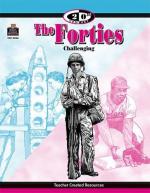|
This section contains 337 words (approx. 2 pages at 300 words per page) |

|
Limitations of Vacuum Tubes.
Before 1948 electrical engineers used vacuum tubes in radios, televisions, computers, and other electrical devices. These bulky tubes, usually encased in glass, typically performed one function each, such as amplifying electronic signals. A complex electrical circuit required several tubes, a lot of space, and good ventilation, since the tubes emitted heat and failed when they got too hot. Moreover, vacuum tubes were inefficient; large amounts of electricity had to be input into the electrical circuit to make a set of tubes work.
The Transistor.
At the end of 1947 William Shockley, John Bardeen, and Walter H. Brattain, working at the Bell Telephone Laboratories, developed the transistor as an efficient alternative to vacuum tubes. The Bell physicists found that by introducing impurities into semiconductors, normally either silicon or germanium, and attaching the semiconductors to a metallic base, they could amplify electronic signals. The...
|
This section contains 337 words (approx. 2 pages at 300 words per page) |

|




